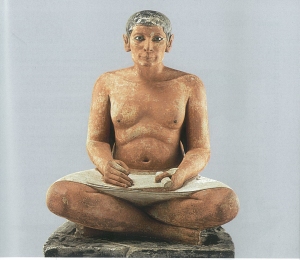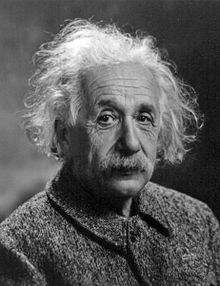(This post is dedicated to my mother, who earned her BA degree from the Department of Correspondence Courses of Delhi University in the year 1972. In the same year, I completed my B.Sc. Honours in Physics from Hansraj College, Delhi University, through the regular classroom method.)
Synopsis
The future of Distance Education can be bright and rosy only if it aims to improve the Employability Quotient of those who subscribe to this stream of knowledge. Given the challenges it faces from traditional class-room learning and from the emerging realm of open on-line learning, there is a strong need to reinvent and reinvigorate the content being offered by it.
Quotient of those who subscribe to this stream of knowledge. Given the challenges it faces from traditional class-room learning and from the emerging realm of open on-line learning, there is a strong need to reinvent and reinvigorate the content being offered by it.
The mode of distance education therefore faces a twin challenge. One, proving itself superior to the traditional class-room learning. Two, that of being one-up on the open on-line content on offer to the youth of today, thanks to advances in technology.
Looked at from the perspective of an employer, when a candidate is being considered to be hired, she needs to not only overcome the barrier of a weaker perception of the distance education mode but also demonstrate her superior depth of applied knowledge. The unique strength that such a candidate brings to the table is possibly that of her prior working experience. It also shows that the candidate has the grit and determination necessary to complete the academic criteria of a course, even while handling a career and other mundane responsibilities of life.
In terms of credibility, on-line courses rank a poor third as of now. But the possibility of these catching up and making HR managers sitting up and taking notice of its contemporary and dynamic nature cannot be ruled out in the very near future.
How does the distance learning mode reinvigorate itself? The key lies in understanding the industry requirements and in incorporating the same to redesign the content on offer. Irrespective of the subject, contact programs which offer workshops on body language, communication skills and in building up self-confidence can help. In some cases, elementary IT skills could add value to a student’s marketability. In others, a crash course in a specific foreign language could perhaps help the candidate bag a dream assignment.
Customer is said to be the king. In the case of distance learning, the customer is the prospective student. If the focus is on improving her Employability Quotient based on the skill-gap felt by the industry, the mode of distance learning would improve upon its unique place in the education-mix on offer to the aspiring youth of today.
What the industry looks for
For any business, hiring is a critical activity. One, the person being recruited also brings in a set of attitudes, beliefs and value systems into the organization. These need to be matched with the core values and the culture of the organization. Two, the skills being brought to the table by the candidate have to be assessed realistically, so the person does not prove to be a misfit. Three, the kind of experience and its relevance to the assignment on hand needs to be evaluated. Four, the qualifications need to be checked, so the organization does not end up hiring either an over-qualified or an under-qualified person.
A premium on values
Attitudes, beliefs and values get formed from an early stage of one’s life. Hence, it would be naïve to assume that formal education at the higher level could play a role in shaping up the same. Yet, some steps could indeed be taken. Management lessons from literature and Indian scriptures, if made a part of the curriculum, would surely reinforce the learning of a career aspirant. Case studies which focus on the values that some brands stand for, such as Tatas and Siemens, could demonstrate the importance of fairness in business dealings. Likewise, details of corporate scandals could drive home the point that excessive greed leads to commercial ruin. Examples such as Satyam and Lehman Brothers readily come to one’s mind.
assume that formal education at the higher level could play a role in shaping up the same. Yet, some steps could indeed be taken. Management lessons from literature and Indian scriptures, if made a part of the curriculum, would surely reinforce the learning of a career aspirant. Case studies which focus on the values that some brands stand for, such as Tatas and Siemens, could demonstrate the importance of fairness in business dealings. Likewise, details of corporate scandals could drive home the point that excessive greed leads to commercial ruin. Examples such as Satyam and Lehman Brothers readily come to one’s mind.
Skilling the young
Skill sets which a candidate is expected to possess obviously vary from assignment to assignment. In most cases, jobs of a technical nature need higher proficiency in the relevant technical domain. However, depending upon the candidate’s aptitude, skills can also be imparted on the job. For instance, a shoe factory can hire an engineering graduate engineer from any discipline and mould her according to their internal requirements.
For jobs of a non-technical nature, particularly those which fall in the realm of marketing, customer service, procurement, and the like, soft skills carry a much higher weightage. Skills in communication, leadership, collaboration, teamwork, analytics, adaptability and planning assume higher importance.
Evaluating experience
With a clear tendency amongst candidates to overstate their career accomplishments and emoluments, recruiters often have to dig deep to ferret out the truth. Often, past employers need to be contacted so as to ascertain the facts. Successes being quoted by a job seeker need to be seen in the context of the business environment in which the same are said to have been accomplished. The recruiter also needs to evaluate if the success was a team effort or an individual one.
Detailed questioning during the course of a personal interview alone enables the hiring person to understand the nuances of the range and depth of experience of a person.
The knowledge matrix
Often, one is aghast to find that a post-graduate in commerce cannot clarify as to on which side of the balance sheet the profit figure should appear. In such a case, a recruiter has to check her enthusiasm and not proceed to ask as to why it should appear on the ‘Liabilities’ side.
Our learning outcomes happen to be weak on conceptual clarity but excel at promoting rote and memory enhancement. Alas, such is the legacy of Lord Macaulay that we continue to follow till this day!
Unless one is hiring for a research and development slot or for an assignment which is highly technical in nature, one does not look for top grades and academic accomplishments. Grades may not be too good a measure of a candidate’s Intelligence Quotient but do show the capacity to work hard and the propensity to reproduce in an examination hall what has been taught in the classroom.
Pedigree does matter, though. Academic institutions have an image which invariably influences the learning outcomes, and thence, the value attached to a candidate’s qualifications.
learning outcomes, and thence, the value attached to a candidate’s qualifications.
A candidate who has undergone a standard classroom process gets taken more seriously than one who has been through the distance education mode. However, the advantage of the latter is that the candidate is likely to have a better Emotional Quotient, especially if she has been pursuing a career as well. This improves the adaptability of the employee and indicates better chances of success on the job.
Distance Education: Unique Selling Propositions
The stream of distance education offers several Unique Selling Propositions.
One, the seeker of knowledge is free of the tyranny of the classroom. No more for her the drudgery of listening to endless uninspiring lectures. There is no emphasis on fixed duration, fixed content dosage of a repetitive kind.
Two, a vast majority of those who opt for this stream are already pursuing either a career or another full-time educational endeavour. Upon successful completion, they bring much higher value to a prospective employer.
Three, prior practical experience brings in a level of maturity which helps the aspirant to shore up her Emotional Quotient, besides adding value to her knowledge base. From the point of view of the employer, this is a great value add.
Four, by shifting from the one-size-fits-all modules to flexible and segmented offerings to a career aspirant, the distance mode has the potential of surpassing the learning outcomes of traditional classroom learning as well as those of on-line learning.
When tyranny begets tyranny
Despite these unique features, employers have an in-built bias in favour of the products of the traditional classroom system.
This bias is rooted in the belief that those who have undergone the traditional process have followed a  discipline of fixed timings and withstood the boredom which goes with repetitiveness. On the other hand, those who have undergone the distance education mode are perceived to have merely wasted their time in worthless pursuits rather than focusing on academic enrichment of their lives.
discipline of fixed timings and withstood the boredom which goes with repetitiveness. On the other hand, those who have undergone the distance education mode are perceived to have merely wasted their time in worthless pursuits rather than focusing on academic enrichment of their lives.
Managements often believe that employees have to be physically available to them for a certain duration in the day and have to fall in line with the overall discipline of reporting times and a singular absence of check-out times. It is believed that to young ones, all work becomes routine and boring after some time. So, a candidate who has already undergone a possibly boring process might survive better and longer within the organization!
Such mundane considerations end up tilting the recruitment windmills in favour of those who have undergone a classroom stream of regular education. In other words, managements which believe in tyrannical practices at the work place end up reposing their trust and faith in hapless candidates who happen to be the products of yet another tyrannical system.
However, with the focus in the economy shifting from manufacturing to services, work-from-home is becoming a buzz word. This is happening also due to the personality traits of the millenials who are joining the work force, as also due to better availability of internet and connectivity. Better prospects are surely ahead for the stream of distance education.
Distance Education: Challenges
Being an important sub-set of the entire education eco-system, the challenges faced by the Distance Education mode are essentially the same as the ones being faced by the overall education system. Admittedly, there are finer differences which make this mode more susceptible to disruptive changes in the society at large.
The onslaught of technology
The rapid pace at which technology is changing is making the tasks of education and skill development tougher. Artificial Intelligence (AI) is capable of taking on the tasks which require analytical skills. Capgemini, the consulting major, recently decided to replace 40% of its work done by its resource management group with IBM’s cognitive computing system, Watson. This shows that it is just not mechanical or repetitive jobs that are at risk.
tougher. Artificial Intelligence (AI) is capable of taking on the tasks which require analytical skills. Capgemini, the consulting major, recently decided to replace 40% of its work done by its resource management group with IBM’s cognitive computing system, Watson. This shows that it is just not mechanical or repetitive jobs that are at risk.
Some crystal gazing
By 2025, almost 70% of India’s population is expected to be in the working age group. By then, thanks to AI and robotics, a large chunk of India’s present knowledge economy would have shrunk. As the contours of the new economy emerge, the country’s collective strength would get determined by world-class education. It would no longer be enough to have commerce and engineering students who can write codes. India would need thousands of research scholars who would be capable of critical thought. This work has to start today.
Augmenting ability, not merely certifying it
It is hoped that the forthcoming new educational policy of the country would suitably address the upcoming challenges of the 21st century. This policy needs to focus on enhancing cognitive skills, capacities for critical thinking and innovation. A robust foundation for the future can only be laid by gearing up all streams of education, including that of distance education, to augment cognitive skills and promote out-of-the-box thinking at all levels. Innovation, and research and development need to emerge as the primary goals of the higher education system. The focus of skill development needs to shift to augmenting the ability rather than remaining confined to the task of merely certifying skills.
The three Rs – reading, writing, arithmetic – must continue to form the core of education. Students who learn these must also learn to question and criticize, to think afresh and come up with new paradigms. They can then end up extending AI, rather than just succumbing to its growing prowess.
Meeting the challenges head-on
The feature of contact classes is a crucial one inasmuch as it gives the students a first-hand feel of the subject and the teacher an opportunity to engage in a direct interaction with the knowledge seeker. The image of the institute gets burnished. So does the quality of skills being imparted.
subject and the teacher an opportunity to engage in a direct interaction with the knowledge seeker. The image of the institute gets burnished. So does the quality of skills being imparted.
Enriching the contact element
The approach in future needs to be to enrich this feature even further. Tie ups with local professionals who are adept at imparting the kind of skills the industry looks for is a sure way to be one-up on the on-line courses. Students can obviously be given a basket of courses to choose from. Additional fee can be charged from those who wish to also take up an intensive communication or leadership course.
Another way to enrich this feature is to make management games, case studies and role-playing as essential elements of contact classes. An internship with a local business, under the guidance of a faculty member, can help the student hone her industrial skills and also add value to her curriculum vitae.
Segmented and specialized offerings
For those taking up courses related to travel and hospitality management, foreign language courses can be offered on an optional basis. Visits to local businesses and an apprenticeship with these could improve the Employability Quotient in a significant manner.
Quite a few vocational skills can be brought under the domain of distance education. This would be a great value add to the employment eco-system. Elementary IT skills, if imparted as a part of the academic offering, can surely help.
Adaptive learning: a flexible way forward
Adaptive learning views attainment of competency as its central goal, the duration of learning being
largely irrelevant. It recognizes that each knowledge seeker is unique and needs a tailor-made basket of courses which, if completed successfully, would make her a productive member of the society. Admittedly, this necessitates a common entry-level screening, which is simple and which gauges the capabilities of the incoming students at the entry-level and then offers them a route which makes them reach their career goals in the shortest possible time.
An industry interface
Distance education institutions which offer career counseling services and have full-time placement executives on board have a definite edge over those who neglect this vital last-mile connectivity
between the employers and the prospective employees.
By adding video sessions covering chats on important subjects with industry leaders, placement officers can add much value to the overall learning of the students. This is especially true of management courses where practical experience matters much more than the knowledge of theoretical formulae and concepts.
The need to reinvent distance education
Albert Einstein famously quipped that insanity is the act of doing the same thing over and over again and expecting different results. By that yardstick, if educationists persist in their belief that continuing with the traditional paradigm of distance education would be a panacea for India’s deepening youth skill crisis, it would amount to insanity!
The need of the hour is to reinvigorate and reinvent this crucial stream of education. A new paradigm needs to emerge. This paradigm needs to be based on the challenges of the 21st century. By substantially enriching the learning process alone can one hope to see India capitalizing on its demographic dividend. We are perhaps about to miss the bus already. The time to bring about this change starts now.
needs to emerge. This paradigm needs to be based on the challenges of the 21st century. By substantially enriching the learning process alone can one hope to see India capitalizing on its demographic dividend. We are perhaps about to miss the bus already. The time to bring about this change starts now.
(A paper presented at the National Conference on Distance Education in India: Emerging Challenges and Prospects, organized by the Directorate of Distance Education, Pondicherry University, Pondicherry, India, on September 8th and 9th, 2016)





















